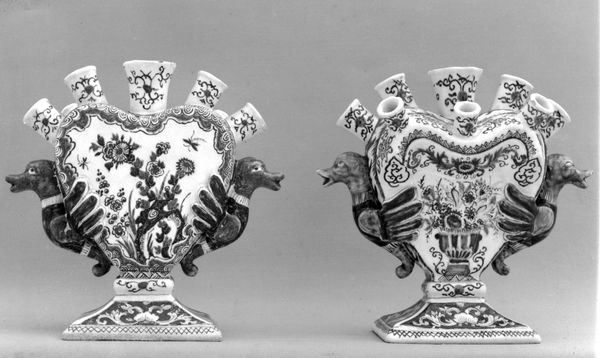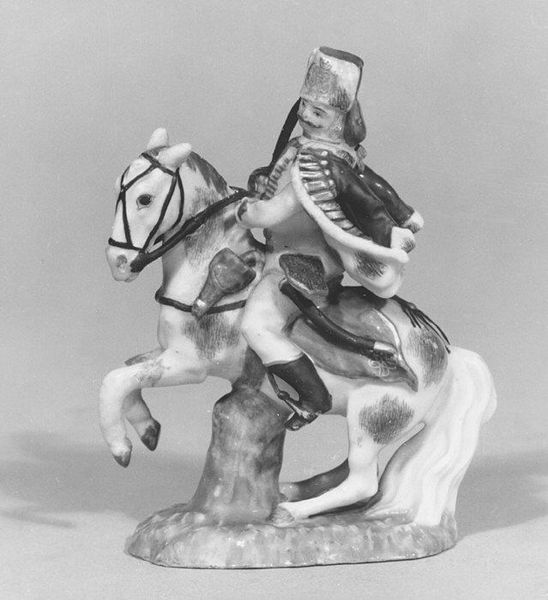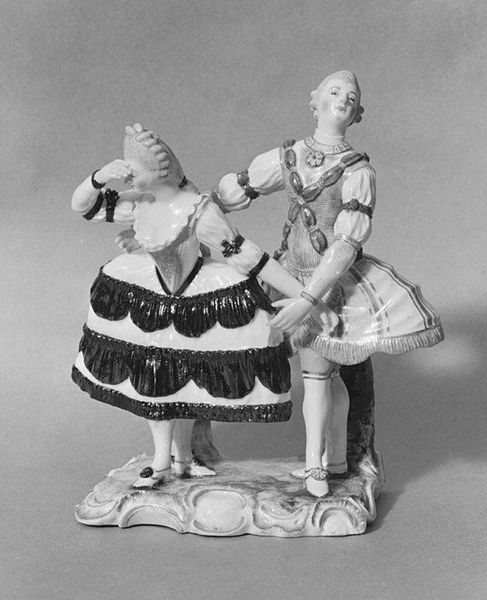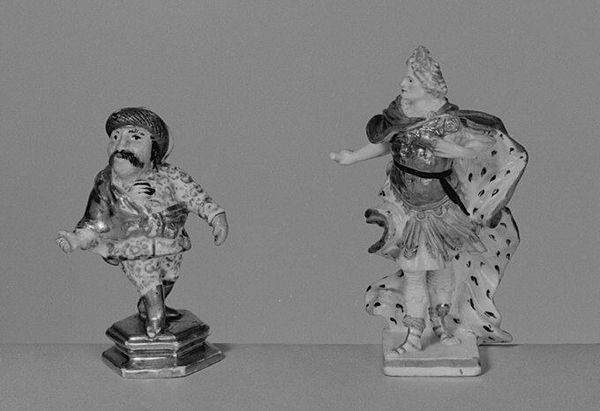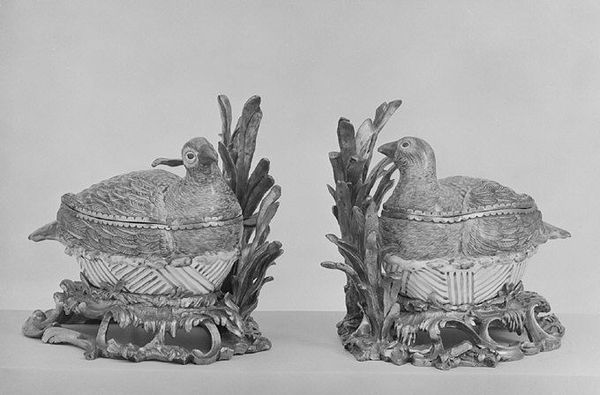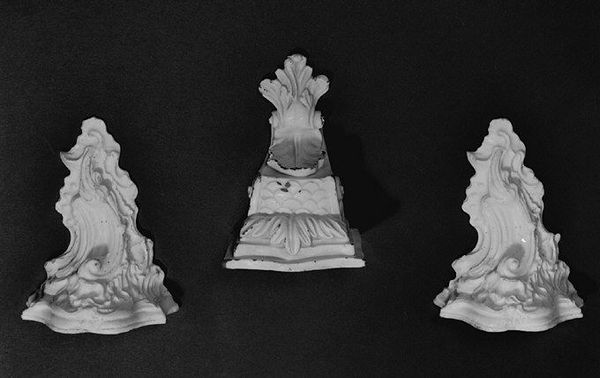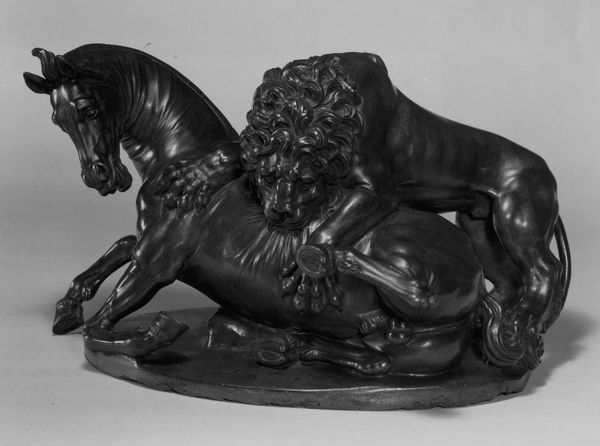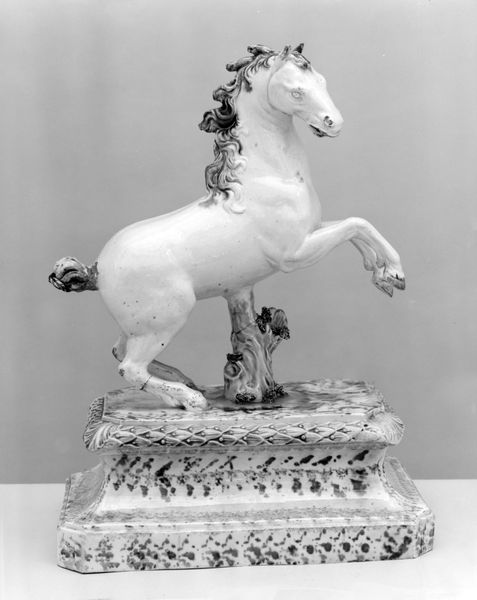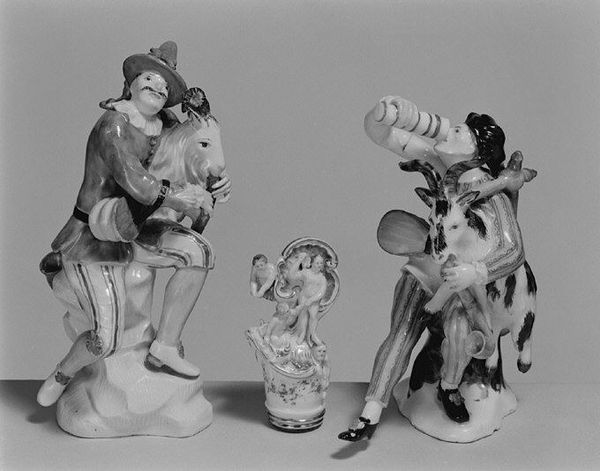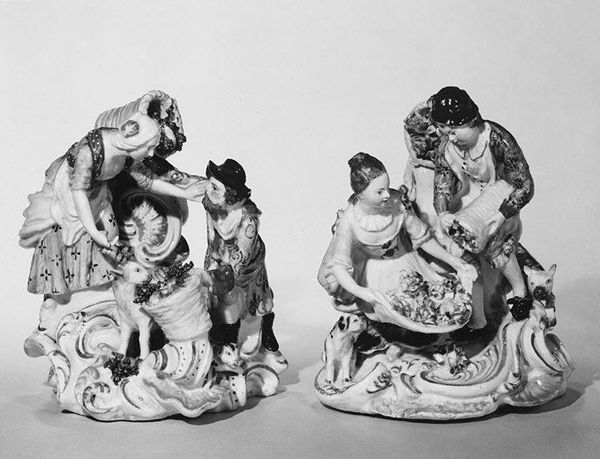
ceramic, sculpture
#
sculpture
#
ceramic
#
figuration
#
sculpture
#
decorative-art
#
rococo
Dimensions: Height (each): 9 in. (22.9 cm)
Copyright: Public Domain
Editor: These are ceramic sculptures of a "Pair of Horses", dating back to sometime between 1750 and 1775. The crisp lines and ornamental designs give them an air of stylized elegance. What can you tell me about how we can think about this pair in a more academic or theoretical manner? Curator: We can approach these sculptures through formal analysis, focusing on elements like line, form, and texture. Consider the repetition of curved lines—in the horses' manes, their saddles, and the decorative base. These repetitions create rhythm. Note also the contrast of smooth, unadorned areas and highly patterned areas. How does that impact your understanding of their aesthetic impact? Editor: I think it makes the piece look less static and adds to the feeling of luxury, without necessarily feeling too heavy. I noticed that, even though they are a pair, the legs are positioned differently in each piece. Why would the artist vary that detail? Curator: Precisely. This divergence prevents them from being mere mirror images. The differing leg positions, slight though they are, generate dynamism and suggest potential movement, wouldn't you agree? The surface decoration of nets is, in itself, an interesting tension between structure and chaos. Editor: Yes, that makes a lot of sense. I hadn't thought about it in terms of introducing dynamic elements into what could have easily become stale symmetry. So much to appreciate simply by looking closely at form! Curator: Exactly. Attending to detail shows you how complex a ‘simple’ objet d’art can truly be. It becomes an embodiment of an idea through careful choices in texture and line.
Comments
No comments
Be the first to comment and join the conversation on the ultimate creative platform.
